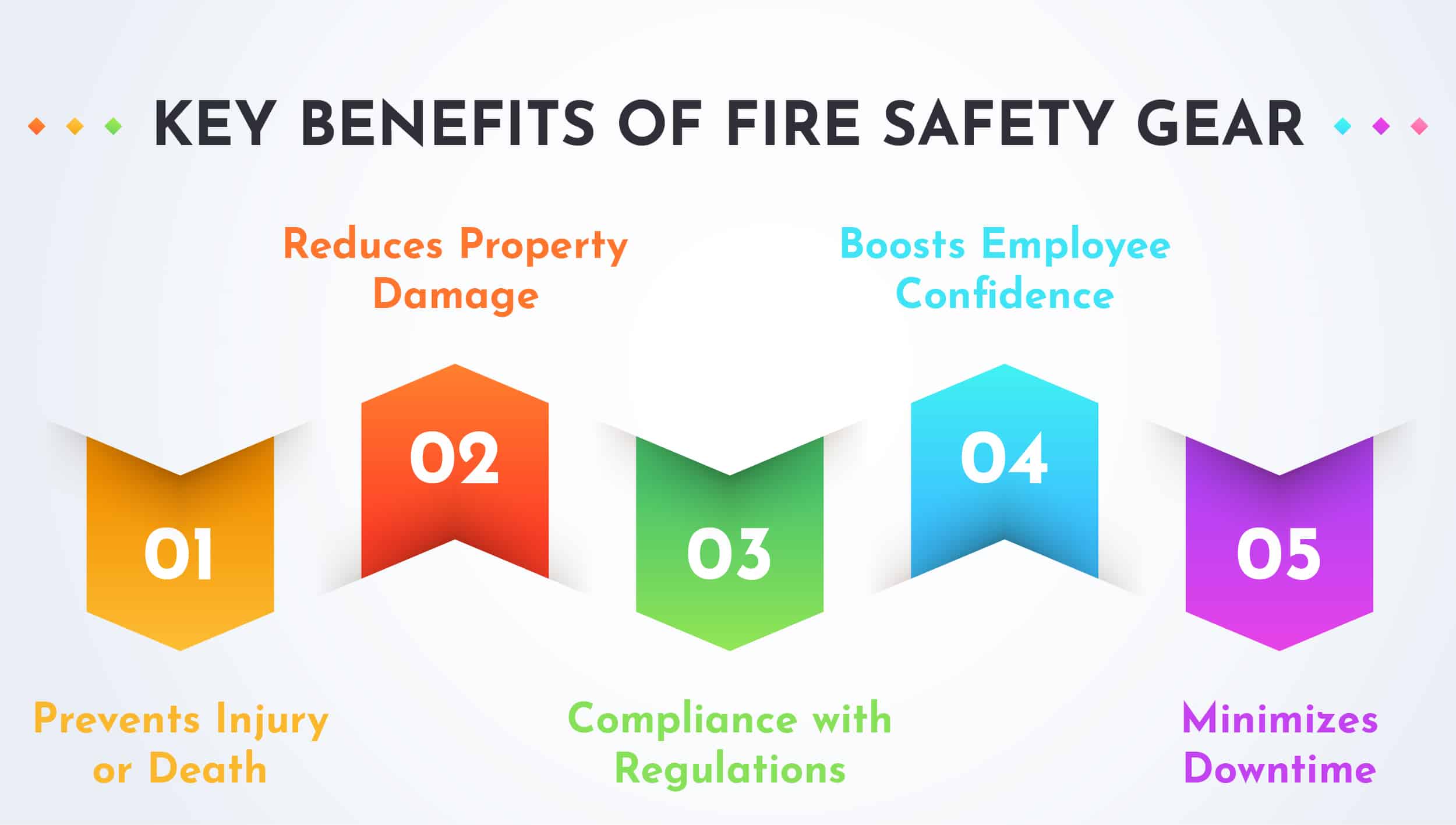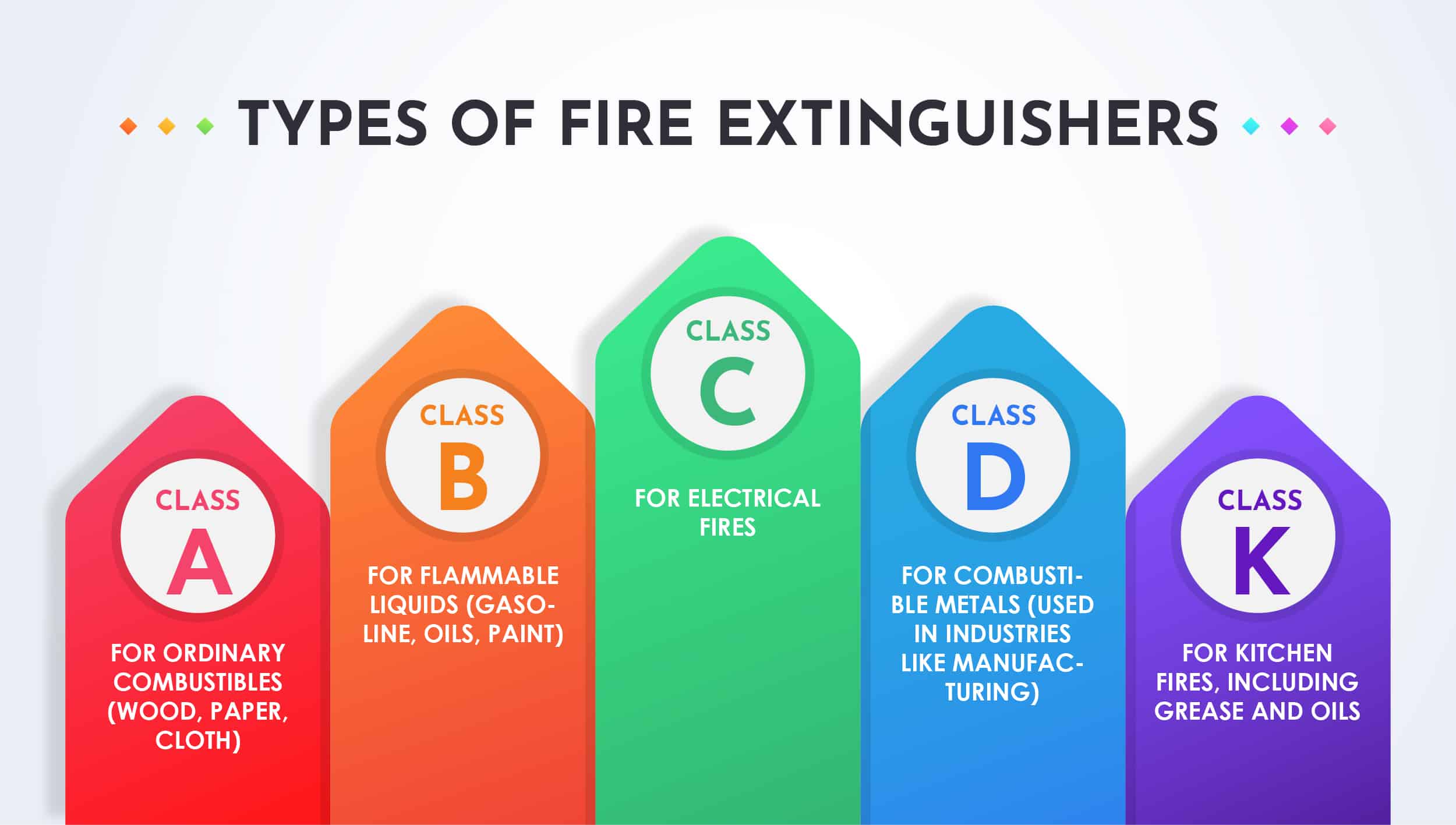Safety Knowledge
The Importance of Fire Safety Gear: Must-Have Products for Workplace Fire Prevention
Whether you work in a high-risk industry like construction, manufacturing, or chemicals, or in an office setting where electrical equipment can pose a fire hazard, the importance of having the right fire safety gear cannot be overstated. Fire incidents can cause devastating damage to property, injury to employees, and even loss of life, making prevention and preparedness paramount. In this blog post, we will explore the importance of fire safety gear and highlight must-have products for workplace fire prevention.
Why Fire Safety Gear Matters
Fires in the workplace can occur unexpectedly, often with little warning. The Occupational Safety and Health Administration (OSHA) reports that workplace fires and explosions result in hundreds of deaths and thousands of injuries every year. Fires can also lead to severe property damage, costly business downtime, and legal liabilities. Having appropriate fire safety gear can mitigate these risks, provide employees with the tools to respond effectively in an emergency, and reduce the likelihood of a fire causing long-term damage.

Key Benefits of Fire Safety Gear:
- Prevents injury or death: Protective gear like fire-resistant clothing, gloves, and helmets shields employees from burns and smoke inhalation.
- Reduces property damage: With the right fire suppression tools, small fires can be contained before they escalate into major disasters.
- Compliance with regulations: OSHA and local fire codes require certain industries to implement fire safety measures, including proper equipment.
- Boosts employee confidence: Knowing they are equipped with the right safety gear can make employees feel safer and more prepared to act in an emergency.
- Minimizes downtime: Quick action with fire safety gear can help limit business disruption caused by fire-related incidents.
Must-Have Fire Safety Products for the Workplace
Investing in high-quality fire safety gear not only protects employees but also demonstrates a company’s commitment to workplace safety and risk reduction. Below are the essential products every workplace should have to ensure fire prevention and safety:

1. Fire Extinguishers
A fire extinguisher is arguably the most basic yet essential piece of fire safety equipment. It allows workers to quickly respond to small fires before they spread. There are different types of fire extinguishers, each designed for specific types of fires:
- Class A: For ordinary combustibles (wood, paper, cloth).
- Class B: For flammable liquids (gasoline, oils, paint).
- Class C: For electrical fires.
- Class D: For combustible metals (used in industries like manufacturing).
- Class K: For kitchen fires, including grease and oils.
Tip: Ensure that fire extinguishers are easily accessible, clearly marked, and regularly inspected. OSHA requires monthly checks to ensure they are fully charged and operational.
2. Fire Blankets
Fire blankets are designed to smother small fires, especially those involving clothing or cooking equipment. They are made from heat-resistant materials and can be wrapped around a person to extinguish flames or thrown over a fire to cut off oxygen. In kitchens, fire blankets are particularly useful for putting out grease fires without the risk of spreading the flames.
Tip: Fire blankets should be placed in kitchens, laboratories, and areas where flammable materials are used.
3. Fire-Resistant Clothing
Certain industries require employees to work in environments with elevated fire risks. In these cases, fire-resistant clothing is essential. Garments such as flame-resistant jackets, pants, and coveralls protect workers from burns in the event of a flash fire or exposure to hot surfaces.
Key Features of Fire-Resistant Clothing:
- Made from materials like Nomex, Kevlar, or flame-retardant cotton.
- Helps prevent second-degree burns or higher.
- Comfortable and breathable, allowing for mobility in high-risk environments.
Tip: Ensure that employees wear fire-resistant clothing when working around high heat sources, electrical hazards, or open flames.
4. Smoke Detectors and Fire Alarms
Smoke detectors and fire alarms are critical for providing early warning in case of a fire. Early detection is key to preventing a small incident from escalating into a full-blown emergency. Smoke detectors should be installed throughout the workplace, especially in areas with high fire risks like kitchens, storage areas, and electrical rooms.
Tip: Test smoke detectors monthly and replace batteries annually. Fire alarms should be connected to local emergency response systems where possible.
5. Emergency Exit Signs and Lighting
In the event of a fire, clear and accessible exit routes are essential for evacuating employees safely. Emergency exit signs and lighting help guide workers to the nearest safe exit. These signs should be visible, even during power outages, which is why they are often equipped with backup lighting.
Tip: Regularly inspect exit signs and ensure they are illuminated during non-working hours.
6. Fire Hose Reels
Fire hose reels are larger-scale firefighting tools for areas where the fire risk is higher. Typically found in warehouses, factories, and large commercial buildings, they provide a continuous supply of water to control and extinguish fires in their early stages.
Tip: Fire hose reels should be installed in locations where a large volume of water may be needed to control a fire. Make sure they are easily accessible and regularly maintained.
7. Fire Sprinkler Systems
For larger facilities, an automatic fire sprinkler system is one of the most effective methods for fire suppression. Sprinklers activate when they detect high heat levels, releasing water to control and extinguish the fire. Fire sprinklers significantly reduce the spread of flames and can save lives and property.
Tip: Fire sprinklers should be maintained and tested regularly to ensure they are fully operational in an emergency.
8. Personal Protective Equipment (PPE)
In certain high-risk environments, employees may need specialized PPE for fire protection. This can include fire-resistant gloves, helmets, goggles, and respiratory protection. PPE is crucial for preventing injury when firefighters or employees need to enter hazardous areas to fight fires or rescue people.
Tip: Ensure that PPE is properly fitted, and employees are trained in how to use it effectively.
9. First Aid Kits
In the aftermath of a fire, quick access to a well-stocked first aid kit can help treat injuries, including burns, cuts, or smoke inhalation. The kit should include burn dressings, antiseptic, gauze, and scissors, along with a manual for providing emergency care.
Tip: Train employees in basic first aid, including how to treat burns and other fire-related injuries.
Fire Safety Training and Drills
Having the right gear is only part of the equation. Equally important is ensuring that employees are properly trained on how to use fire safety equipment and know what to do in the event of a fire. Regular fire drills, both scheduled and surprise, are essential to keep employees prepared and confident.
Key Fire Safety Training Components:
- How to use fire extinguishers and other suppression tools.
- The proper evacuation procedures and assembly points.
- How to perform basic first aid for burn injuries or smoke inhalation.
- The importance of reporting potential fire hazards.
Conclusion
Fire safety gear is a non-negotiable element of workplace safety. It protects your employees, your business, and your property from the devastating effects of fire. From fire extinguishers and blankets to fire-resistant clothing and advanced suppression systems like sprinklers, investing in high-quality fire safety gear is a proactive step toward preventing workplace fires and mitigating their potential impact.
In addition to equipment, fire safety training and drills play a vital role in ensuring that your employees are prepared to act swiftly and effectively in the event of a fire. By combining the right tools with proper knowledge and procedures, businesses can minimize the risks associated with workplace fires and create a safer, more secure environment for everyone.
Don’t wait for a fire to occur before you act—start implementing fire safety measures today to protect your workforce and ensure a safer tomorrow.
